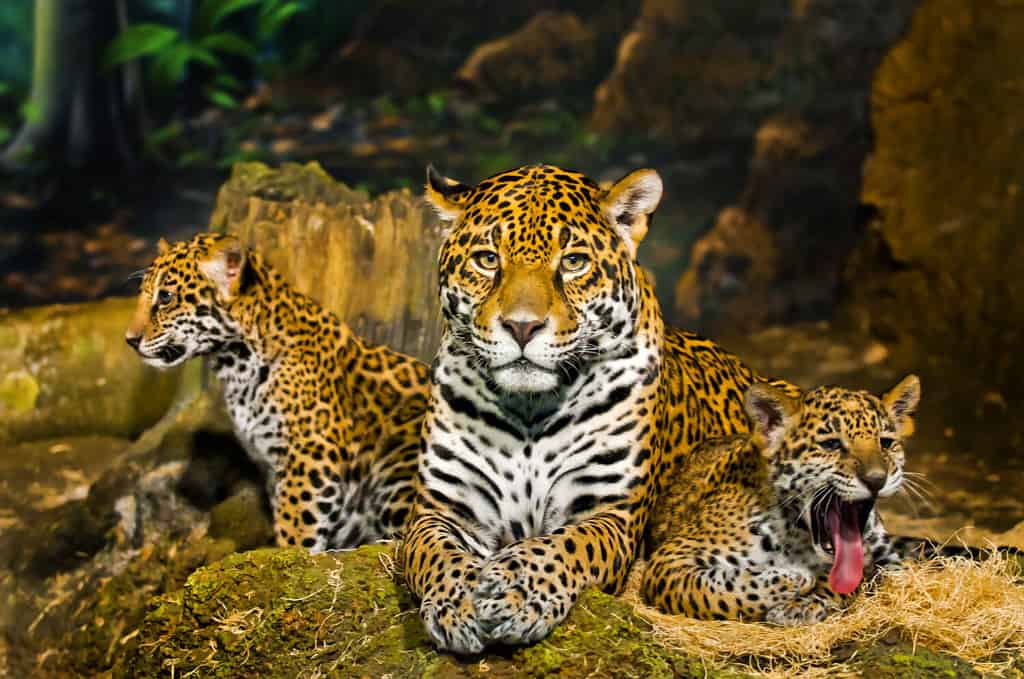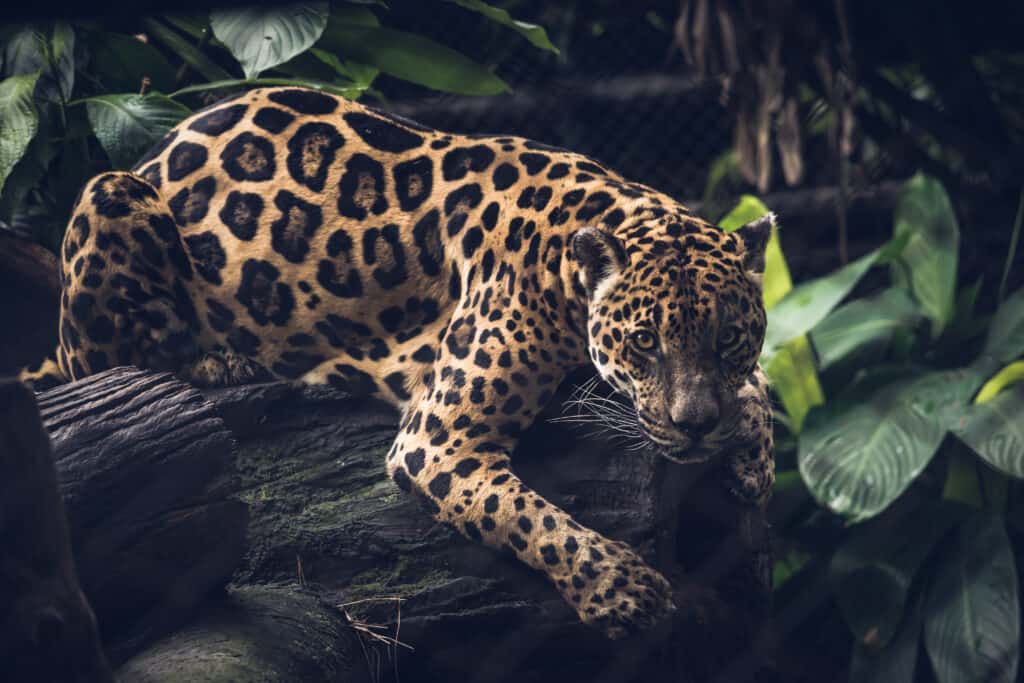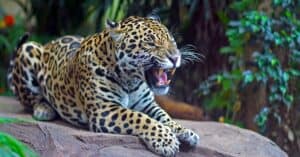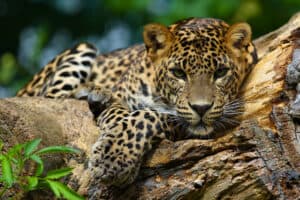Jaguars are the largest feline species in the Americas, as well as the third largest in the world. They can recognized by their rosette fur pattern. Due to habitat loss and hunting, however, recent years have seen a decline in this cat’s wild populations. Below, learn more about jaguars, as well as about International Jaguar Day — a day for spreading awareness about jaguars around the globe.
When Is International Jaguar Day?
International Jaguar Day is observed on the same day each and every year: November 29th.

Jaguars are one of the few wild felines that live in the Western Hemisphere.
©Kris Wiktor/Shutterstock.com
History of International Jaguar Day
Conversations about International Jaguar Day first erupted in March 2018. During this time, representatives from fourteen different countries made the trek to New York to meet at the United Nations Headquarters for a special purpose. That special purpose: the Jaguar 2030 Forum.
The largest result of this meeting was the Jaguar 2030 Statement. This document brought greater awareness to the dangers faced by jaguar populations, as well as acted as a roadmap for preservation. Several international initiatives were outlined, including the creation of an annual day dedicated to spreading awareness—International Jaguar Day. This exists alongside many national awareness days as well, such as Brazil’s National Jaguar Day.
International Jaguar Day serves not only to spread awareness about jaguars but also to highlight them as an iconic species representing the preservation of biodiversity.
What Happens on a Global or International Animal Day?
There are a variety of different activities that can happen on a day like International Jaguar Day, depending on your location.
In most places, many zoological parks or animal organizations will dedicate the day to jaguars. You may see special educational programs or resources offered, and many locations will also partake in fundraising. Funds raised during this time can help the jaguar population as a whole, or, in certain locations like zoos, they may help the resident jaguars.
It’s also common to see more people talking about jaguars, especially in online spaces. Different organizations dedicated to animals will often offer highlights on the jaguar species, including the different threats they face and how you can participate in conservation.
Overall, International Jaguar Day, like other animal days, is focused on spreading awareness. This can happen in many different forms.
How to Participate in International Jaguar Day
With so many different things that can occur on International Jaguar Day, you may be wondering how to get involved.
First, the best way to get involved is to check with your local wildlife resources about any possible events. Any nearby zoos or research centers may be hosting public events to spread awareness and educate people on the species.
You can also participate by being an ambassador. This means being one of the people to spark the conversation. You can share facts with your loved ones and tell them about how interesting jaguars are.
Certain organizations may also be accepting donations at this time.
Participation doesn’t have to be costly or even in person, though. You can set aside some time on International Jaguar Day to learn more about the species on your own. You can also spread the word through social media, helping spread awareness and increase knowledge about jaguars, all from the comfort of your own home.

There are several different ways to get involved in International Jaguar Day.
©Pedro Helder Pinheiro/Shutterstock.com
Species Profile: Jaguar
The jaguar (Panthera onca) is a species of feline native to North America, Central America, and South America. Their current estimated population size is around 15,000, making them a near-threatened species. Historically, they could be found as far north as the United States, but hunting and habitat loss has resulted in a much more condensed population.
They are the largest feline native to the American continents. They are the third largest species in the world, following only the tiger and lion. Adult jaguars can grow to weigh around 210 pounds, and they can reach lengths of up to 75 inches. They are closely related to leopards.
The name “jaguar” is derived from the South American Tupi and Guarani languages. It is most likely related to yaguareté, which means “true, fierce beast.” Another possible origin is yaguar, which means “he who kills with one leap.”
The majority of hunting is conducted on the ground. However, jaguars are highly skilled hunters regardless of the terrain, and they have been known to hunt both from the trees and near water. They are an ambush predator that excels in taking down medium-sized prey. Some of the jaguar’s prey include:
- Deer
- Capybara
- Peccaries
- Tapirs
- Turtle
- Fish
- Caiman.

The jaguar is a large and muscular animal that has a heavier and sturdier body than that of a
leopard
.
©George Arenas/Shutterstock.com
The photo featured at the top of this post is © Anan Kaewkhammul/Shutterstock.com
Thank you for reading! Have some feedback for us? Contact the AZ Animals editorial team.






